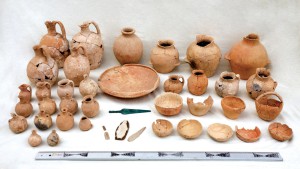 Vladimir Wolff Avrutis
Vladimir Wolff Avrutis
Zinman Institute of Archaeology, University of Haifa, Israel (vladimir.avrutis@mail.huji.ac.il)
Keywords: South Levant, Egypt, Early Bronze Age, cultural and trade links, pottery, weapons.
The Early Bronze Age (EBA) sites discovered in the South Levant are rich in the materials of Egyptian origin; there were also recorded Egyptian colonies. In Egypt proper articles of South Levantine manufacture have been encountered in the tombs of the pharaohs and aristocracy of the 1st Dynasty. Interaction can be traced in the development of pottery-making and metallurgy. Signs of the pharaohs of the 1st dynasty on storage and transportation jars encountered outside Egypt may be indicative of the official character of these links. The relations stopped unexpectedly in the EBA II period in the first third of the 3rd millennium BC. It seems likely that the change of the political situation in both regions led to the change of economic priorities. In recent years rescue excavations have been carried out in the territory of the ‘Nesher’- Ramla factory in the Loda Valley. Among other sites, a large cemetery dating to the final phase of EBA I was discovered. The excavated burials contain a wide range of finds: pottery and stone vessels, copper and f lint tools, ornaments and numerous Egyptian imports. The new data are unique and enrich considerably our views of the character of links between the South Levant and Early dynastic Egypt.







